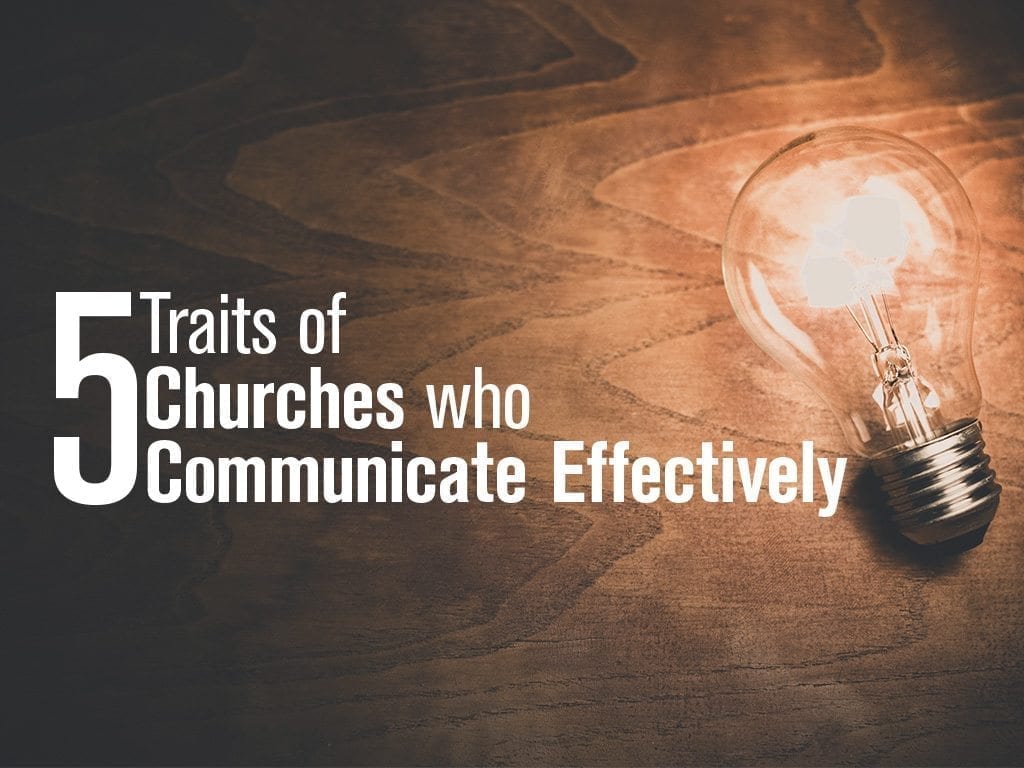As I talk with church leaders, I’m amazed at the similarity of communication challenges they express.
One after another lists a lack of…
- Time
- Experience
- Money
as key hinderances to the effectiveness of their church communications in reaching their church and community.
It got me wondering about what is working, what other areas are struggles, and what resources would help. So, I ran a couple of church communication surveys to learn a bit more.
The surveys revealed…
The majority of churches struggle to get people to respond to their communications.
Looking at the churches who are most effective in communicating their message and getting people to respond, one thing stands out.
They have a communication strategy in place.
Not only do they have a church communication strategy in place, but regardless of church size or affiliation, their strategies share five key traits.
Amazingly, the traits aren’t dependent on church denomination, budget or style, and they are implementable by a church of any size.
The 5 Traits of Churches that Communicate Effectively With Their Community are…
1) Intentional Promotions
Communications take into account…
- The event audience
- How they communicate
- Where they get information
- How they are most likely to respond
- What they will gain by participating
Example: Young families communicate using text, email, and print. They get information via Facebook and Instagram and are most likely to respond online. They are looking for community and support for their family but live busy lives and don’t have lots of extra time.
Intentional promotions would use this information to be strategic about reaching them.
2) Repeatable Steps
We are creatures of habit. Repeat the same thing enough times and it becomes a routine. Routines help us to accomplish tasks faster, because we don’t have to rethink the steps involved. We know it works so we continue to follow it.
By applying this principle to our communications we ease the stress of creating a new plan for every event.
Example: Last month we found young families responded well to 3 Facebook posts and an email update each week. To see similar results next month, we should repeat the same communication pattern.
3) Manageable Pieces
The strategy is easy to administer and staff or volunteers can follow it without overload.
Example: Our upcoming young families event needs 3 Facebook posts and an email update each week for the next month. Knowing this in advance allows us to work ahead as ministry time permits, rather than rushing at the last minute.
4) Engagement Driven
Communications focus attention on the value and life change available more than the details about the event.
Example: Ever wonder if you’re too busy? Constantly running without an end in sight and your marriage is feeling the strain? You’re not alone. We’ve been there ourselves and want to help. Join the Young Families group Friday, 7pm in the Fellowship Hall as we discuss ways to strengthen our marriages. Child care provided free of charge. Call for more details or RSVP via email.
5) Interaction is Expected
Communications are a 2-way street, encouraging questions and further discussion.
Example: In the Young Families announcement above, the questions, use of a phone contact, and email are intentional. The expectation is for families to see themselves in the announcement and want to know more about the solutions offered. As they inquire, we have the opportunity to connect personally and minister one-on-one.
Need help getting started with your communication strategy?
I’d love to help. Leave a question in the comments below, or use the contact form to send me a message directly.
